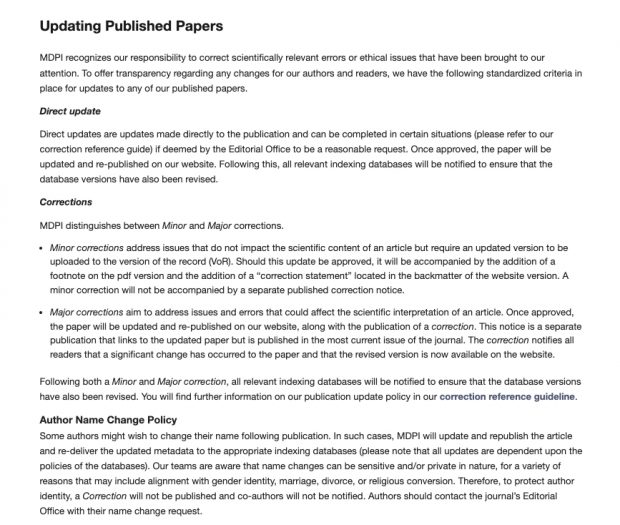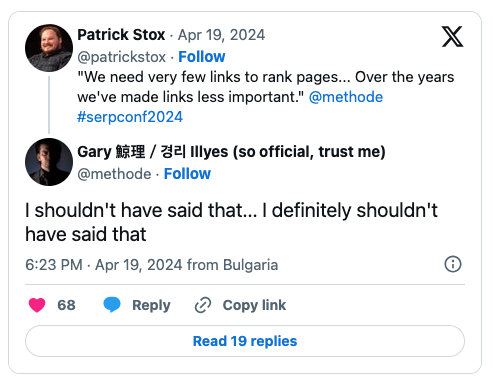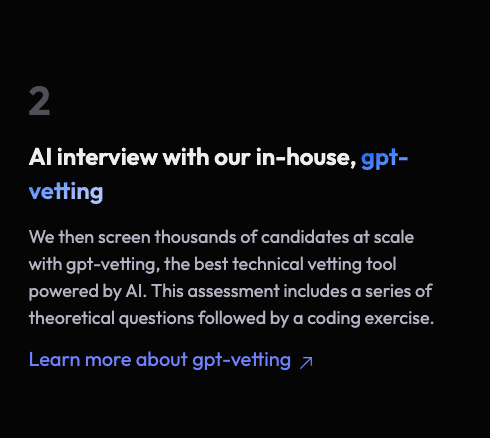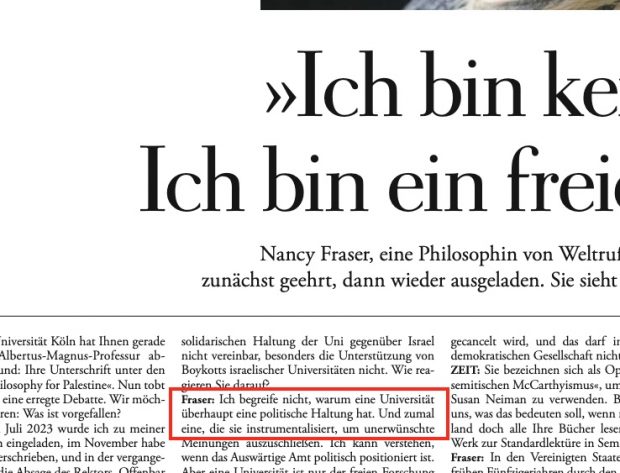| International Journal of Information Technology | World Academy of Science, Engineering and Technology | Computer Science |
| Journal of Mundane Behavior | Millersville University | Sociology |
| Complexity International | Johnston Center, Charles Sturt University | Complex Systems |
| Pharmaceutical Reviews | Pharmainfo.net | Pharmacology |
| Annales Universitatis Mariae Curie-Sklodowska - Sectio D. Medicina | Uniwersytet Marii Curie-Sklodowskiej | Medicine |
| Essays in Education | Columbia College * Department in Education | Education |
| Peace Tourism Journal | International Centre for Peace Through Tourism Research | POLITICAL SCIENCE - INTERNATIONAL RELATIONS, TRAVEL AND TOURISM |
| Journal of Global Social Work Practice | Dominican University * Graduate School of Social Work | SOCIAL SERVICES AND WELFARE |
| International Quarterly of Sport Science | Hungarian Society of Sport Science | SPORTS AND GAMES |
| Public Knowledge Journal | Public Knowledge Journal | Political science |
| Hamburg Review of Social Sciences | Hamburg Review of Social Sciences | Social Sciences |
| Doping Journal | Doping Journal | BIOLOGY - BIOCHEMISTRY, PHARMACY AND PHARMACOLOGY |
| eMinds | Universidad de Oviedo * Departamento de Informatica | COMMUNICATIONS, COMPUTERS |
| Crossroads | Alta Scuola di Economia e Relazioni Internazionali | BUSINESS AND ECONOMICS, LAW, POLITICAL SCIENCE - INTERNATIONAL RELATIONS |
| Electronic Journal of Organizational Virtualness | Journal of Organizational Virtualness | COMPUTERS - INTERNET |
| AntePodium | Victoria University of Wellington * School of Political Science and International Relations | POLITICAL SCIENCE |
| Durham Anthropological Journal | University of Durham * Department of Anthropology | ANTHROPOLOGY |
| Studencheskii Nauchnyi Zhurnal | Studencheskii Nauchnyi Zhurnal | SCIENCES: COMPREHENSIVE WORKS |
| Learning Exchange | University of Westminster | EDUCATION - HIGHER EDUCATION |
| Romanian Medical Reviews & Research | Viata Medicala | MEDICAL SCIENCES |
| Kuwait Radiology Journal | MedicalMantra Information Systems | MEDICAL SCIENCES - RADIOLOGY AND NUCLEAR MEDICINE |
| Transformations (Atlanta) | Associated Colleges of the South | HUMANITIES: COMPREHENSIVE WORKS - COMPUTER APPLICATIONS |
| Afroeuropa | Universidad de Leon * Departamento de Filologia Moderna | Linguistics |
| IBScientific Journal of Science | IBScientific Publishing Group | Engineering |
| Anatolian Journal of Obstetrics & Gynecology | Alkim Basin Yayin Ltd. ti. | Gynecology and Obstetrics |
| Journal of Education for International Development | Educational Quality Improvement Program | Education |
| Rocky Mountain Communication Review | University of Utah * Department of Communication | COMMUNICATIONS |
| Biomirror | Xinnovem Publishing Group | Biology |
| Journal of Advanced Pharmaceutical Research | Pharmaceutical Research Foundation | Pharmacology |
| Working Papers in Art and Design (Online) | University of Hartfordshire * Department of Design and Foundation Studies | Art |
| Neurobiology of Lipids | Neurobiology of Lipids | BIOLOGY - PHYSIOLOGY, MEDICAL SCIENCES |
| Journal of Dagaare Studies | University of Hong Kong | HISTORY - HISTORY OF AFRICA, LINGUISTICS, LITERATURE |
| International Journal of Pharmacy Education | Samford University * McWhorter School of Pharmacy | EDUCATION - HIGHER EDUCATION, PHARMACY AND PHARMACOLOGY |
| International Journal of Pharmaceutical and Biomedical Research (IJPBR) | PharmSciDirect Publications | Pharmacology |
| School of Advanced Technologies. Electronic Journal | Asian Institute of Technology | Computers |
| Lyon Pharmaceutique (Online) | Association des Pharmaciens - Anciens Eleves - Amis de la Faculte de Pharmacie de Lyon | Medicine |
| St. Francis Journal of Medicine | St. Francis Medical Center | Medicine |
| Ciência & Tecnologia dos Materiais | Sociedade Portuguesa de Materiais | General and Civil Engineering |
| Social Science Paper Publisher | University of Western Ontario, Department of Sociology | Social Sciences |
| The Carleton University Student Journal of Philosophy | Carleton University, Department of Philosophy | Philosophy |
| African Journal of Environmental Assessment and Management | AJEAM/RAGÉE | Environmental Sciences |
| Cal Poly Journal of Interdisciplinary Studies | California State Polytechnic University | Education |
| Philosophic Nature | Excogitation & Innovation Laboratory | Science (General) |
| Asia-Pacific Journal of Oncology & Hematology | San Lucas Medical | Medicine |
| International Journal of Signal Processing | World Academy of Science, Engineering and Technology | Electrical and Nuclear Engineering |
| Advances in mathematical and computational methods | Information Engineering Research Institute | Mathematics |
| Social Science Letters (SSL) | Information Engineering Research Institute | Social Science |
| International journal of swimming kinetics | International Society of Swimming Coaching | Sports physiology, sports medicine |
| Open source science journal | Academy of Economic Sciences | Computer Science |
| Revista sujeto, subjetividad y cultura | School of psychology University of Arts and Social Sciences, ARCIS, Santiago de Chile | Psychology |
| Biotechnology and health sciences | Qazvin Qazvin University of Medical Sciences | Biotechnology and Health Sciences |
| European Journal of Economic & Political Studies | Faith University | |
| Technológia Vdelavania | Združenie Slovdidac | Education |
| Mukaddimah: jurnal studi Islam dan informasi PTAIS | Kopertais Wilayah III | Religion |
| New theology review | Liturgical Press | Theology |
| Journal of Medical Sciences Research | Journal of Medical Sciences Research (J M S R) | Medicine |
| Revista de Educao e de Tecnologia Aplicadas Aeronutica | Comando da Aeronutica | Transportation |
| Patria Grande : Revista Centroamericana de Educacin | Coordinacin Educativa y Cultural Centroamericana | Education |
| Ovid, Myth and (Literary) Exile | Ovidius University Press | Languages and Literatures |
| Journal of eLiteracy | University of Glasgow | Library and Information Science, e-literacy |
| Informacini Technologij Taikymas vietimo Sistemoje | Kauno Kolegija (Kaunas University of Applied Sciences) | Education |
| Perspectives in Oral Sciences | Universidade Positivo | Dentistry |
| Acta Monographica | Acta Monographica | SCIENCES: COMPREHENSIVE WORKS |
| Journal of Advances in Developmental Research | Gujarat Vidyapeeth University | Sociology |
| Interdipendenze : Rivista di Teoria e Ricerca Sociale, Studi Ecologici, Etnoscienze | Societ di Etnosociologia e Ricerca Sociale (S.E.Ri.S) | Environmental Sciences --- Sociology |
| Lianes | Lianes Association | Sociology |
| E-journal of Reservoir Engineering | Petroleum Journals Online | Mining and Metallurgy |
| Social Justice in Context | Institute for Social Justice, East Carolina University | Social Sciences |
| Educao Profissional : Cincia e Tecnologia | Servio Nacional de Aprendizagem Comercial do Distrito Federal | Science (General) --- Education |
| SRX Biology | Scholarly Research Exchange | Biology |
| More than Thought : a Scholarly Literary Journal Devoted to Consciousness | More than Thought | Languages and Literatures |
| European Journal of Clinical & Medical Oncology | San Lucas Medical | Oncology |
| European Neurological Journal | San Lucas Medical | Neurology |
| Journal of Neuroparasitology | Ashdin Publishing | Internal medicine --- Neurology |
| Scholars' Research Journal | Wolters Kluwer | Biotechnology |
| Arquivstica.net | Arquivstica.net | Library and Information Science |
| Emergent Australasian Philosophers | Dean Goorden and Matthew Paul, Ed. & Pub. | Philosophy |
| Journal of Coagulation Disorders | San Lucas Medical | Internal medicine |
| Comunicaciones de la Sociedad Malacolgica del Uruguay | Sociedad Malacolgica del Uruguay | Zoology |
| Ciencias Sociales Online | Universidad de Vina del Mar * Escuela de Ciencias Sociales | Social Sciences |
| eJournal of Biological Sciences | EJARR Publishing | Biology |
| Global Tourism | Global Tourism Consulting and Training | Geography --- Social Sciences |
| Translocations : Irish Migration, Race and Social Transformation Review | Dublin City University | Migration --- History |
| Cancerologa : Revista del Instituto Nacional de Cancerologa | Instituto Nacional de Cancerologa de Mxico | Oncology |
| Analytica | Analytica | Philosophy |
| Open Aging Journal | Bentham open | Internal medicine |
| Research in Biotechnology | School of Bio Sciences and Technology VIT University | Biotechnology |
| War Crimes, Genocide and Crimes Against Humanity | Penn State Altoona | Social and Public Welfare --- Law |
| Research Journal of International Studies | European Journals, Inc. | Social Sciences --- Political Science |
| Journal of Preventive Medicine | Institute of Public Health, Iasi | Public Health |
| Middle East Studies | Middle East Studies | Social Sciences |
| Journal of Forensic Accounting | R.T. Edwards, Inc. | Accounting |
| Gendernye Issledovani | Kharkov Center for Gender Studies | Gender Studies |
| Electronic Journal of Environmental, Agricultural and Food Chemistry | Universidade de Vigo | Nutrition and Food Sciences --- Agriculture (General) |
| Electronic Journal of Literacy through Science | University of California, Davis | Education |
| Tierra Tropical : Sostenibilidad, Ambiente y Sociedad | Universidad EARTH | Environmental Sciences |
| Information Technology, Learning, and Performance Journal | Organizational Systems Research Association | Computer Science --- Education |
| International Diabetes Monitor | Medical Forum International | Internal medicine |
| Journal of Azerbaijani Studies | Khazar University | Social Sciences |
| Nordic Notes | Flinders University Adelaide | Ethnology --- History |
| Journal of dentistry, oral medicine and dental education | Scientific journals international | Dentistry |
| Journal of Research Methods and Methodological Issues | Scientific journals international | STATISTICS |
| Journal of reviews international | Scientific journals international | PUBLISHING AND BOOK TRADE |
| Journal of unconventional theories and research | Scientific Journals International | Multidisciplinary |
| Journal of Sports & Recreation Research and Education | Scientific journals international | Sports education |
| Journal of dissertations | Scientific journals international | HUMANITIES: COMPREHENSIVE WORKS - COMPUTER APPLICATIONS |
| Journal of interdisciplinary & multidisciplinary research | Scientific journals international | Multidisciplinary |
| Journal of economics, banking and finance | Scientific journals international | Economics |
| Journal of international and cross-cultural studies | Scientific journals international | Cultural studies |
| Journal of business and public affairs | Scientific journals international | Business |
| Journal of multicultural, gender and minority studies | Scientific journals international | Sociology |
| Journal of psychiatry, psychology and mental health | Scientific journals international | Psychology |
| Journal of nursing, allied health & health education | Scientific journals international | Nursing |
| Scientific journals international | Scientific journals international | Multidisciplinary |
| Journal of agricultural, food, and environmental sciences | Scientific journals international | Agriculture |
| Journal of creative work | Scientific journals international | |
| Journal of education and human development | Scientific journals international | Education |
| Journal of law, ethics and intellectual property | Scientific journals international | |
| Journal of literature, language and linguistics | Scientific journals international | Linguistics |
| Journal of engineering, computing, and architecture | Scientific journals international | Engineering |
| Journal of medical and biological sciences | Scientific journals international | Medical |
| Journal of humanities and social sciences | Scientific journals international | Social Science and Humanities |
| Open Journal of Hematology | Ross Science Publishers | Medical |
| International Journal of Marketing Practices | Asian Institute of Advance Research and Studies | Economics |
| Genomics and quantitative genetics | Knoblauch Publishing | Biology |
| International Journal of Pharmaceutical Frontier Research | International Journal of Pharmaceutical Frontier Research | Pharmacology |
| Infopreneurship Journal | "This journal is privately published online by Mahmood Khosrowjerdi in Iran." | Economics |
| World of Sciences Journal | Engineers Press | Science and knowledge in general. Organization of intellectual work |
| Indicios (La Rioja) | Universidad Nacional de La Rioja, Instituto Criminalístico de La Rioja | Criminal law |
| Journal of Applied Technology in Environmental Sanitation | Department of Environmental Engineering, Sepuluh Nopember Institute of Technology (ITS) Surabaya, and Indonesian Society of Sanitary and Environmental Engineers (IATPI) Jakarta | Ecology |
| Journal of Applied Phytotechnology in Environmental Sanitation | Department of Environmental Engineering, Sepuluh Nopember Institute of Technology (ITS) Surabaya, and Indonesian Society of Sanitary and Environmental Engineers (IATPI) Jakarta | Ecology |
| Biosciences International | Infofacility | Biological Sciences |
| Journal of Pharmaceutical and Bioanalytical Science | Journal of Pharmaceutical and Bioanalytical Science | Pharmacy |
| Journal of Clinical & Experimental Research | Saujas Publications | Medicine |
| Journal of Current Pharmaceutical Research | Medipoeia | Pharmacy |
| Latin American Journal of Conservation | ProCAT | Zoology |
| Plant Science Feed | Lifescifeed Ventures | Biological Sciences |
| International Journal of Research in Computer Sciences | White Globe Publications | Computer Science |
| Asian journal of pharmaceutical and biological research | Young Pharmaceutical and Biological Scientist Group | Pharmacology |
| Buletin Teknik Elektro dan Informatika | Universitas Ahmad Dahlan | Engineering |
| Applied mathematics in engineering, management and technology | Iran Water and Power Resources Company | Mathematics |
| International Journal of Computer and Distributed Systems | Council for Innovative Research | Computer Science |
| International Journal of Management and Strategy | International Journal of Management and Strategy | Management |
| TheHealth | Lahore Institute of Public Health | Health |
| Amnesia Vivace | Cultural Association Amnesia Vivace | Fine Arts |
| Alfa Redi : Revista de Derecho Informático | Comunidad Alfa-Redi | Law |
| Journal of Chinese Clinical Medicine | Hong Kong Medical Technologies Publisher | Medicine |
| International Journal of Design Computing | University of Sydney | Engineering |
| Polar Bioscience | National Institute of Polar Research | Biology |
| Journal of Multimedia | Academy Publisher | Computer Science |
| Transplantationsmedizin: Organ der Deutschen Transplantationsgesellschaft | Pabst Science Publishers | Internal medicine |
| Wildlife Biology in Practice | Portuguese Wildlife Society | Ecology |
| Great Lakes Geographer | Dept. of Geography, University of Western Ontario | Geography |
| Computer Science Master Research | Universitatea Politehnica din Bucuresti | COMPUTERS |
| Romanian Review of European Governance Studies | Universitatea "Babes-Bolyai" * Centrul "Altiero Spinelli" de Studiere a Organizarii Europene (CASSOE) | PUBLIC ADMINISTRATION |
| International Journal of VLSI and Signal Processing Applications | Innovation Science Publications | COMPUTERS |
| Simbiosis | Universidad de Puerto Rico * Escuela Graduada de Ciencias y Tecnologias de la Informacion | Library and Information Science |
| International Journal of Contemporary Business Studies | Academy of Knowledge Process | BUSINESS AND ECONOMICS |
| Journal of Postcolonial Cultures and Societies | Guild of Independent Scholars | HUMANITIES: COMPREHENSIVE WORKS, SOCIAL SCIENCES: COMPREHENSIVE WORKS |
| E- Journal of Dentistry | E - Journal of Dentistry | MEDICAL SCIENCES - DENTISTRY |
| Journal of Academic and Applied Studies | International Association for Academians | EDUCATION |
| Neues Curriculum | Deutscher Akademischer Austausch Dienst | EDUCATION, HUMANITIES: COMPREHENSIVE WORKS |
| Contemporary Online Language Education Journal | Akdeniz Universitesi | Literature |
| Open Government | Liverpool John Moores University * Faculty of Business & Law | POLITICAL SCIENCE - CIVIL RIGHTS |
| International Journal of Drug Formulation and Research | International Journal of Drug Formulation and Research | Pharmacology |
| European Journal of ePractice | P A U Education | International Law |
| Economics and Finance Review | Global Research Society | Economics |
| Revista Panamericana de Infectologia | Asociacion Panamericana de Infectologia | Public Health |
| Research Center for Educational Technology. Journal | Research Center for Educational Technology, Kent State University | EDUCATION - TEACHING METHODS AND CURRICULUM |
| Molecular and Cellular Pharmacology | LumiText Publishing | Pharmacology |
| NeoAmericanist | University of Western Ontario * Centre for American Studies | HUMANITIES: COMPREHENSIVE WORKS |
| The Electronic Journal of Literacy Through Science | University of California, Davis * School of Education | EDUCATION |
| Calicut Medical Journal | C M C Alumni Association | Medical Sciences |
| Philica | Philica | HUMANITIES: COMPREHENSIVE WORKS, SCIENCES: COMPREHENSIVE WORKS, SOCIAL SCIENCES: COMPREHENSIVE WORKS, TECHNOLOGY: COMPREHENSIVE WORKS |
| Reconstruction | Reconstruction | HUMANITIES: COMPREHENSIVE WORKS |
| Rexter | Centrum pro Bezpecnostni a Strategicka Studia o.s. | Political Science |






